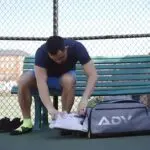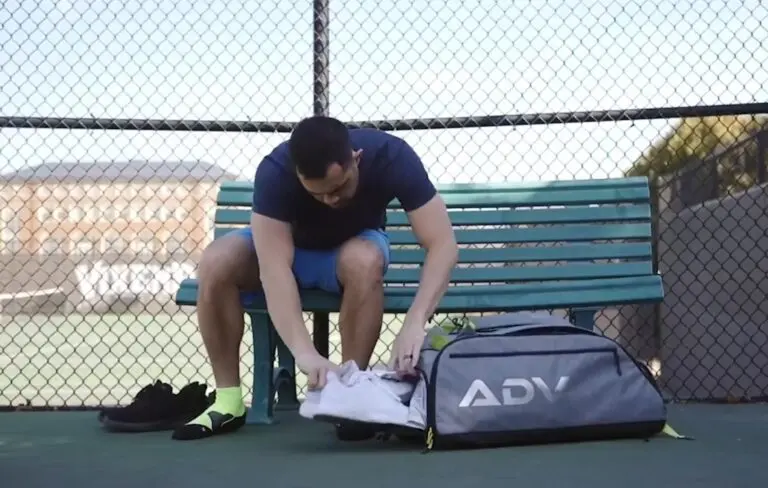The majority of professional tennis players purchase new rackets about once a year. To give everything to chance, skilled players can keep their playing strategies constant. As a result, certain club players argue that “if it’s not broken, don’t patch it. “, there is no need to make changes. To change your rackets constantly, or do those club teams argue?
Do tennis racquets wear out? Yes, for a club match, a racket may endure for several years, but it will only wear out for a full-time player in a short time.
Some players are harsher on frames, and their rackets wear down quicker. When the rackets are worn out, they may need to be replaced. It’s important to have two to four rackets in play, so if they are broken, you must replace them.
Do Tennis Racquets Wear Out?

Yes, over time, racquet frames do begin to soften. As time goes by, multiple pressures build up and wear down the racquet and the threads, and as a result, it becomes less rigid.
The process is very incremental and mostly occurs over a long period, rendering it impossible to track by striking with the racquet.
It seems as if some rather observant players note and have said that their frame no longer has the same snap. Using the RDC is the only way to test frame “softening” to be done analytically.
Continuing to monitor the frame’s overall stiffness over time will be needed to account for frame stiffness degradation. If you have connections to a nearby pro store, you may not be willing to use an RDC device.
The duration of the “softening” mechanism is subject to various influencing variables, such as how strongly the athlete strikes the pitch.
How much the frame is strung, where it is stored, and string friction, though not restricted to that. There is no set time frame. It’s totally up to you. The fact is that there are several items you can do to lengthen the service life of your racquets.
Select an accomplished, cautious, attentive professional. Reclining is one of the most uncomfortable motions doesn’t suggest you can stop yourself from doing it! It’s very similar to normal vehicle repairs with a tennis racquet.
A fresh or sloppy stringer may dramatically shorten the racquet’s existence or possibly harm the frame.
A high-quality stringer can minimize the tension on your frame with competence and care and increase its life.
Protect your racquets from sunlight, temperature extremes, and humidity by storing them in a stable or regulated environment.
Extreme conditions and fluctuations of temperature aren’t suitable for racquets. In the summer, hold them out of direct sunshine and in an unheated garage. In the winter, cover them with shade and switch them off to not sit in the glare.
Keeping them in a stable environment at room temperature prevents the items from deteriorating due to fluctuations in temperature and temperature extremes.
Never hit a racquet, push or hit a racket with a racquet, or use a racquet for hammering the ball. A few bruises and bruises are inevitable throughout the game. But skirting around these actions can help your racquet.
I can’t say—but about whether or not it’s time for you to adjust the frame. I’ve seen people hold up for decades. However, based on my knowledge, I would claim this: Holding up talent with age is tough.
If you were stringing your racquet daily (as you should), it might be time to explore new frames.
How Long Do Tennis Rackets Last?
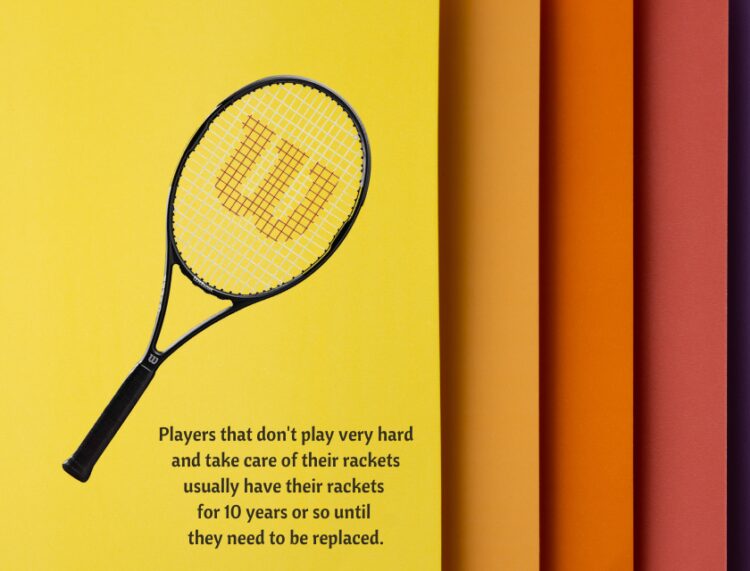
Usually, most rackets are constructed of fibers and resins. Serves and groundstrokes placed a lot of tension on the frames. Eventually, the fiber and resin will decay, and the racket will soften. Since this occurs over time, it cannot be readily apparent to teams.
However, a decline in stiffness would reduce the strength and spin generated by the frame and reduce control. A pricey piece of equipment known as a Racket Diagnostic Center (RDC) can diagnose any degradation. You will always need to focus on general guidance even though you don’t know how long your rackets can last.
To become a more consistent hitter, one can practice consistently and participate in tournaments, and rackets would usually stiffen after one year. Players that don’t play very hard and take care of their rackets usually have their rackets for 10 years or so until they need to be replaced.
How often do replace tennis racquets?
The only time you can buy a new racquet is when it fails or is no longer functional for your needs (or if it was never well-suited to you). If you like to try a different short, it’s okay, but that is not a substitute.
The definition of “upgrade” remains the same. Upgrading is rather arbitrary because there are different racquets. The misconception that you must maintain pace with the latest technologies is not right.
There are just a few situations in which one can do something, and they aren’t dependent on how long the racquet has been in your possession.
If the racquet is bent, cracked, or even in bad condition.
These occurrences don’t happen on time scales. So, they are often the product of real events such as a hard-hitting projectile being thrown from a higher structure, being in the path of a falling object, or being struck by a big object.
The racquet should be dry fully, whether held in intense heat or cold for a long period. When these conditions occur, like your tennis racket is bent, cracked, and even in poor condition, you have to replace the tennis racket.
The ball will slide easily off the strings.
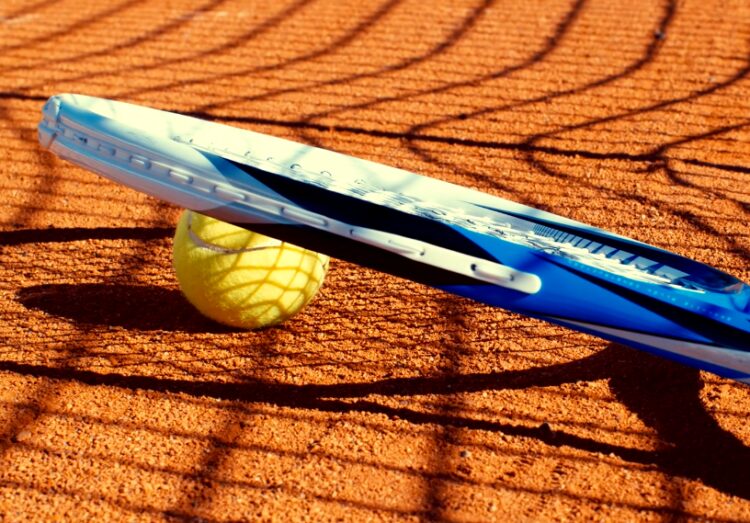
If the ball is made of wood, metal will not strike the racquet firmly (unless, of course, you like that). The object seems to wear out. Also, graphite doesn’t. They may not seem significant enough to interfere with a casual player’s game.
If your own game or conditions have modified, or you never approved of your initial frame.
Suppose you have sustained an accident that prohibits you from using your former racquet. Or if you no longer have the capacity to use it, you will want to use a new one. Using a more compact racquet or a certain weight will help often.
Additionally, if you have developed a new playing style (say from a serve and volley player to someone who wants to control points), there might be a frame more appropriate for your game. It would be best to make these modifications even though you don’t have a racquet in hand. Finally, if you’ve made a big gain, it’s time to order a new frame.
If you’ve been shopping for a lesser frame, now is the time to upgrade to a higher-quality one.
It’s possible you just purchased the last value racquet at a discount shop, department store, or another racket-selling establishment that doesn’t do so. There are “special offers” from supermarkets that aren’t intended to survive the competition.
If you have updated or are already able to buy decent goods, don’t hesitate to do so. Although you bought a new racket for more than $150, you are almost certainly upgrading in terms of cost.
Check Best Tennis Racquets Under $100
How to tell if your tennis racket is cracked?
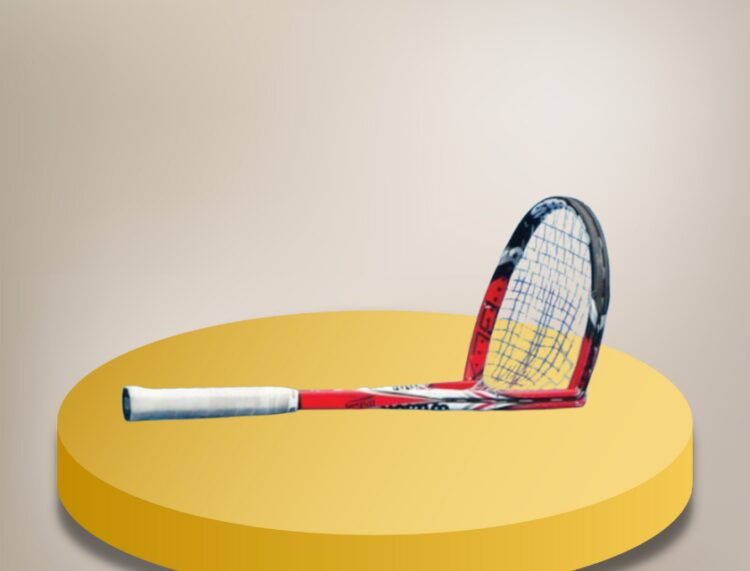
Tennis rackets are some of the most long-lasting sporting devices. They are simple to maintain without maintenance and last a long time. And, of course, if you are unable to keep your racquet intact for a while in your tennis matches, you might as well break it.
But something can happen in life. If you pay attention to it, it, it will last. Diagnose which section of the racquet needs repair and identify whether it can be fixed. Any of the issues would probably not be solved, and you would need to get a new racquet to think about this.
Your Strings Are Broken
This is almost always a challenge. My rule of thumb is that cords are snapped at the mains. I want to remind you not to change your string so it doesn’t wear unevenly, which might ruin your racket in certain situations.
The Racket seems different to you.
For those who have been practicing for around six months to a year, you should be able to tell whether something is wrong with your racquet. If your racquet feels odd, your shots do not sound as well. Is it possible that the ball is less powerful as you strike it, or does it change direction? When these signs occur in your racket, I encourage you to investigate them.
Occasionally, hairline fractures can appear in racquets, and they can be difficult to locate. If either of the frames seems to be damaged, I regret to state that the racquet is broken. Over and over again, rather than repairing it, I’d advise getting a fresh racquet if you have to get a cheap one because it will save you money in the long term.
The racquet seems to make strange sounds that it did not use to before
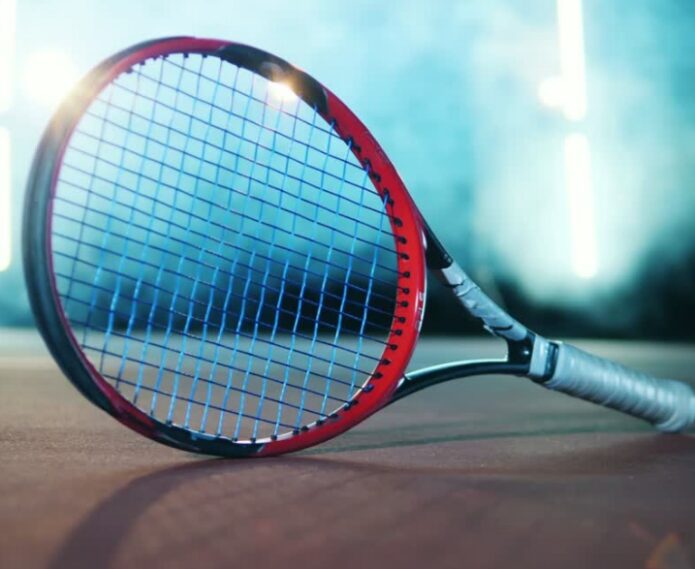
This is a problem for nearly all racquets, but the ones you bought from the stores are more likely to have it. Either the string strain is too strong for the poor frame, flimsy frame, or you would have hit the racquet to have caused the injury. And now, when you strike the ball, the sound it produces is different.
Cracking or fracturing this frame is especially concerns someone who is only beginning to play tennis. This frame may grow worse over time. And your racquet may eventually snap in your hands.
This frame may be more damaging to anyone who plays a lot of tennis. So, it will need to be changed regularly.
The racquet shot out of his hand and fortunately impacted me just on the thigh, which just caused a bruise but might be damaging if it struck me on any body part of my body.
You would see whether the damage is major or slight since the racquet is less used whether you have just started playing.
Butt Cap Coming Off
You run into another issue with inexpensive rackets. The handle on the racquet begins slipping off, which happened to me while I was starting.
If you do not have to skill in the use of hardware, you can easily repair this. If you examine the racquet, you’ll see that the cap is stapled to the grip.
Carefully cut the staples and add a solid commercial adhesive to the cap and ass of the racquet. Also, staple the boot to an industrial-grade stapler.
You should be able to re-grip your racquet and return to your game if you have the tools to do so. The industrial super glue should stay longer, which is much more effective than the regular glue that came with the racquet.
Grommets of The Racket Are Broken
Grommets enable the tennis strings to run through, or there will be no main and cross-partition.
They are easily ordered from sporting retailers or internet retailers but can be difficult to identify if you’re not aware of the ones to use.
Breaks will happen during the stringing procedures if they are made if you tie a knot on one nipple. Removing grommets has the side effect of breaking the thread.
Grommets offer a cushion for the strings. So, if they’re missing, no matter what string forms, just the frame will harm them.
I suggest having the racket replaced if the holes are broken. You will verify prices for your racket by going to Amazon.
However, if you have such grommets, you can buy a new racket to use them.
Conclusion
For a fresh racquet (i.e., as long as it’s not a restring), most skilled players and racquet technicians would suggest that serious players—i.e., those who strike the ball often and restring less frequently—replace their frames every two or three years. Even if you want the appearance of your frames, then there is no urgent need to be worried about improvements.
FAQs:
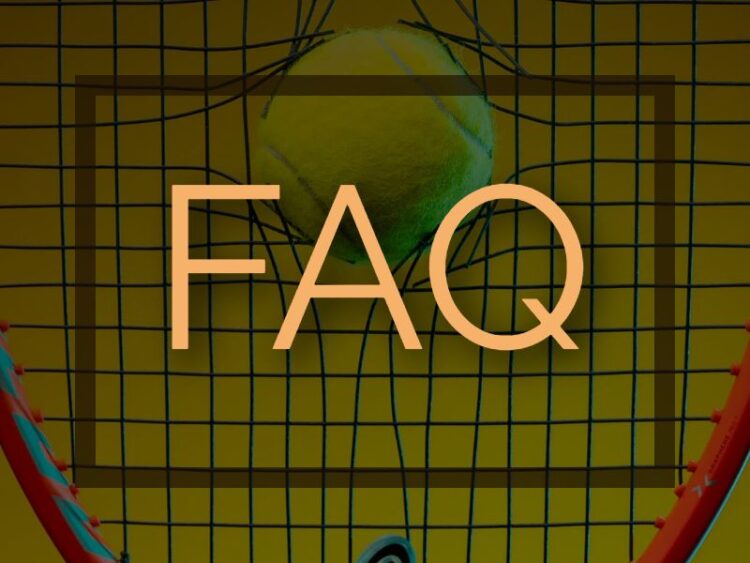
Do tennis rackets go dead?
They indeed do move on. It depends on various factors. Of course, one thing to consider is the consistency of the racquet. Stringing the racquet often places great strain on it.
How can I know if my tennis racket needs to be restrung?
The sight of the musical notes. See how the guitar is holding up after you’re done playing and see when it’s time to restring. If your strings are tired or require replacing, your spin and strength would be diminished.
How long do tennis rackets last?
Racquets usually last about two years in normal use before needing replacement. Physically, the frame is not showing much harm, but with continued use, the racquet loses elasticity.
Do tennis strings lose tension over time?
The fact that all tennis strings lose their tension is self-evident. When you string a racquet for the first 24 hours, strings would have lost around 10% of their tension.
Read More:
References:
https://www.wilson.com/en-us/blog/tennis/how-tos/how-often-should-i-re-string-my-tennis-racket
https://www.usta.com/en/home/improve/gear-up/national/when-is-it-time-for-a-new-tennis-racquet.html
Related:
- Top 19 Best Tennis Bags 2024 [Unbiased Reviews]
- 20 Best Tennis Shoes 2024 - Stylish and Athletic
- 18 Best Tennis Racquets 2024 - Exclusive Reviews &…
- 15 Best Tennis Balls 2024 - USTA and ITF Approved
- 15 Best Tennis Racquet for Beginners & Intermediate…
- 10 Best Tennis Ball Machine 2024 - Perfect for Solo Players





